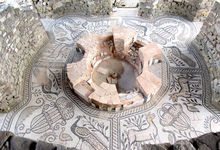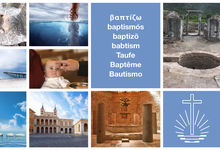The sacraments (11): Baptism and its five dimensions
The New Testament is largely silent on how a baptism is supposed to be performed. But the Bible has a lot to say about what the sacrament means. Here is an overview.

No, Scripture does not unfold a separate and self-contained doctrine of baptism, but it does provide quite a few pieces to the jigsaw, mainly in the Acts of the Apostles and in the epistles. Likely the best picture we can get is formed in Paul’s letter to the Romans, chapter 6. Taking everything into consideration, the biblical understanding of baptism shows five dimensions.
A shared destiny with Christ
“Baptised in the name of the Lord Jesus.” This, or slightly modified, is the wording used above all in Acts. Whether the Greek phrase means that Christ wants to make man His own or man wants to make Christ his own is a matter of debate among scholars. Whichever is the case, it is a matter of affiliation, of a bond, a covenant.
But it is by no means a loose kind of bond that followers have with their role model. This is a shared destiny of life and death: “Or do you not know that as many of us as were baptised into Christ Jesus were baptised into His death?” (Romans 6: 3).
Redemption through renewal
This bond is the path to eternal salvation, for it offers the necessary renewal. The New Testament offers as many as three different images for this.
- Putting on Christ like a new garment is an analogy that we are familiar with from the epistles to the Ephesians, Galatians, Romans, and the Thessalonians. In this context, the garment represents the status—specifically the new status before God.
- The washing with water for cleansing purposes is mentioned in the epistles to the Ephesians, Hebrews, and the Corinthians, as well as in Acts. This is a reference to the forgiveness of sins.
- The epistle to Titus and the epistles of Peter, as well as the gospel of John, go even further when they speak of the washing of regeneration or the rebirth out of water as the renewal of the whole being.
Foundation for the gift of the Holy Spirit
Holy Baptism is closely connected with the gift of the Holy Spirit. Peter already made it a prerequisite in his Pentecost sermon: “Repent, and let every one of you be baptised in the name of Jesus Christ for the remission of sins; and you shall receive the gift of the Holy Spirit” (Acts 2: 38).
The New Testament repeatedly highlights this duality, for example in 1 Corinthians 6: 11: “But you were washed, but you were sanctified, but you were justified in the name of the Lord Jesus and by the Spirit of our God.” Above all in John 3: 5: “Most assuredly, I say to you, unless one is born of water and the Spirit, he cannot enter the kingdom of God.”
Admission to the fellowship
Baptism is systematically described as admission to the fellowship of believers. This admission goes far beyond a mere membership in some or other club. This is particularly evident in 1 Corinthians 12, where the image of the body of Christ is used. All the individual members of the body are connected with each other. They are dependent upon one another and experience both suffering and well-being together.
This affects the relationship of the members to each other. Differences no longer count: “For as many of you as were baptised into Christ have put on Christ. There is neither Jew nor Greek, there is neither slave nor free, there is neither male nor female; for you are all one in Christ Jesus” (Galatians 3: 27–28).
The beginning of the last things
Even though baptism marks the starting-point on our path to salvation, the goal is already firmly anchored in it. This is the central subject developed in Romans 6. Those who are baptised into Christ are “dead indeed to the power of sin”. For if we have become like Him in His death, then we will also be united with Him in His resurrection so that we may also “walk in newness of life”.
Photo: magann - stock.adobe.com















